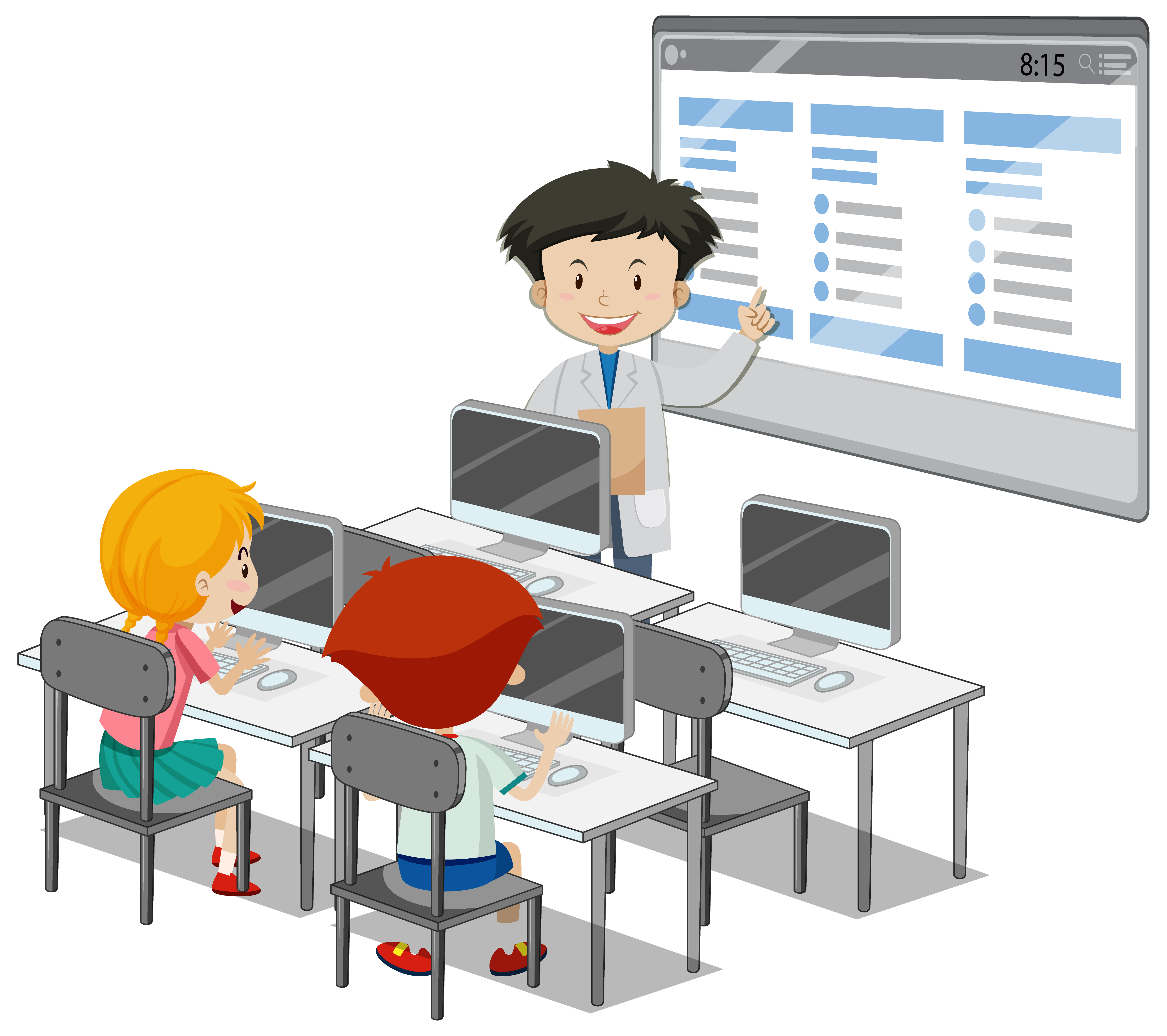Instructor Led Training
HTML, CSS & JavaScript Web Publishing
Instructor-led training (ILT) is a traditional form of education that involves a skilled instructor leading a classroom or virtual session to deliver training to learners.
Limited seat available, enroll before date January 26, 2026.
why should buy instructor led course?
Investing in an instructor-led course offers several advantages that can greatly enhance your learning experience. One of the key benefits is the opportunity to receive expert guidance from seasoned professionals who possess extensive knowledge and expertise in the subject matter. These instructors can offer valuable insights, address your queries, and provide guidance tailored to your specific needs. Additionally, instructor-led courses follow a well-structured curriculum, ensuring a comprehensive learning journey that covers all the essential topics. This structured approach enables you to progress in a logical and organized manner, building a strong foundation of knowledge. Moreover, instructor-led courses often provide personalized feedback, allowing you to receive individualized assessments and guidance to improve your understanding and skills.
Professional Certificate.
Obtaining certification of completion is a significant benefit that comes with many instructor-led courses. This certification serves as formal recognition of your successful completion of the course and showcases your commitment to learning and professional development. It can be a valuable addition to your resume or portfolio, highlighting your expertise and dedication in a specific field or skill set. Certification demonstrates to employers, clients, or colleagues that you have acquired the necessary knowledge and skills to perform tasks effectively. It can enhance your credibility and open doors to new career opportunities or advancements. Moreover, certification provides a sense of accomplishment and satisfaction, validating the time and effort you invested in the course. Ultimately, the certification of completion offers tangible evidence of your commitment to continuous learning and professional growth, making it a worthwhile asset in today's competitive job market.
How Does It Work?


Zoom meeting with student twice a week.
As an educator, I have implemented a structured learning approach by conducting Zoom meetings with my students twice a week. This interactive platform has become an invaluable tool for fostering meaningful connections and facilitating engaging discussions in a virtual classroom setting.


AI Tutor support.
Mentoring support plays a crucial role in guiding individuals towards personal and professional growth. By offering mentorship, I provide a safe and supportive space for individuals to explore their goals, challenges, and aspirations.


Assignments and Grade.
Assignments and grading are essential components of the educational process, allowing students to demonstrate their understanding of concepts and skills while providing teachers with a means to assess their progress. Assignments are designed to reinforce learning, encourage critical thinking, and promote independent problem-solving.
About This Course
Ever wanted to build your own website? This course gives you the skills to go from beginner to website creator. We'll walk you through everything you need to know, from understanding how websites work to adding images and making your site interactive. Learn HTML, CSS, and the basics of JavaScript to bring your website ideas to life. By the end, you'll be able to publish your own website and impress employers with your web development skills.
Skills You’ll Get
Hands-On Labs
44+ LiveLab | 34+ Video tutorials | 01:47+ Hours
Video Lessons
25+ Videos | 01:33+ Hours
Lesson Plan
Introduction
What Is Web Publishing?
- Thinking Like a Web Publisher
- Web Browsers
- Web Servers
- Uniform Resource Locators
- Defining Web Publishing Broadly
- Summary
- Workshop
- Additional Exercises
Getting Your Tools in Order
- Anatomy of a Website
- Setting Up Your Computer for Web Publishing
- Using the Google Chrome Developer Tools
- What Do You Want to Do on the Web?
- Wireframing Your Website
- Web Hosting
- Summary
- Workshop
- Additional Exercises
Introducing HTML and CSS
- What HTML Is (And What It Isn't)
- What HTML Files Look Like
- HTML Attributes
- Using the style Attribute
- A Short History of HTML Standards
- The Current and Evolving Standard: HTML5
- Summary
- Workshop
- Additional Exercises
Learning the Basics of HTML
- Structuring Your HTML
- The Title
- Headings
- Paragraphs
- Comments
- Summary
- Workshop
- Additional Exercises
Organizing Information with Lists
- Lists: An Overview
- Numbered Lists
- Unordered Lists
- Definition Lists
- Nesting Lists
- Other Uses for Lists
- Summary
- Workshop
- Additional Exercises
Working with Links
- Creating Links
- Linking Local Pages Using Relative and Absolute Pathnames
- Links to Other Documents on the Web
- Linking to Specific Places Within Documents
- Anatomy of a URL
- Kinds of URLs
- Summary
- Workshop
- Additional Exercises
Formatting Text with HTML and CSS
- Character-Level Elements
- Character Formatting Using CSS
- Preformatted Text
- Horizontal Rules (or Thematic Breaks)
- Line Break
- Addresses
- Quotations
- Special Characters
- Fonts and Font Sizes
- Summary
- Workshop
- Additional Exercises
Using CSS to Style a Site
- Including Style Sheets in a Page
- Selectors
- Units of Measure
- Editing Styles with Developer Tools
- Using Color
- Links
- The Box Model
- More Selectors
- The <body> Tag
- Summary
- Workshop
- Additional Exercises
Using Images on Your Web Pages
- Images on the Web
- Image Formats
- Inline Images in HTML: The <img> Tag
- Images and Text
- Images and Links
- Other Neat Tricks with Images
- Image Backgrounds
- Using Images as Bullets
- What Is an Imagemap?
- Image Etiquette
- Summary
- Workshop
- Additional Exercises
Building Tables
- Creating Tables
- Table Parts
- Sizing Tables, Borders, and Cells
- Table and Cell Color
- Aligning Your Table Content
- Spanning Multiple Rows or Columns
- More Advanced Table Enhancements
- How Tables Are Used
- Summary
- Workshop
- Additional Exercises
Using CSS to Position Elements on the Page
- Positioning Schemes
- Absolute Positioning
- Fixed Positioning
- Controlling Stacking
- Creating Drop-Down Menus
- Summary
- Workshop
- Additional Exercises
Designing Forms
- Understanding Form and Function
- Using the <form> Tag
- Using the <label> Tag
- Creating Form Controls with the <input> Tag
- Using Other Form Controls
- Grouping Controls with fieldset and legend
- Displaying Updates with progress and meter
- Applying Cascading Style Sheet Properties to Form Elements
- Planning Your Forms
- Summary
- Workshop
- Additional Exercises
Structuring a Page with HTML5
- A Short History of HTML Page Layout
- Laying Out a Page in HTML5
- HTML5 Structural Tags
- The Page Outline
- Using HTML5 Structural Elements
- Summary
- Workshop
- Additional Exercises
Integrating Multimedia: Video and Sound
- Embedding Video the Simple Way
- Hosting Your Own Video
- Embedding Video Using <video>
- Embedding Flash Using the <object> Tag
- The <embed> Tag
- Embedding Flash Movies Using SWFObject
- Flash Video Players
- Embedding Audio in Your Pages
- Summary
- Workshop
- Additional Exercises
Advanced CSS: Page Layout in CSS
- Laying Out the Page
- The Role of CSS in Web Design
- Summary
- Workshop
- Additional Exercises
Using Responsive Web Design
- What Is Responsive Web Design?
- Mobile Devices Should Come First
- Planning a Responsive Website
- Writing Media Queries
- Understanding the Mechanics of RWD
- Responsive Web Design Best Practices
- Summary
- Workshop
- Additional Exercises
Introducing JavaScript
- Why Would You Want to Use JavaScript?
- The <script> Tag
- JavaScript and the Chrome Development Tools
- The JavaScript Language
- The JavaScript Environment
- Events
- Summary
- Workshop
- Additional Exercises
Using jQuery
- What Are JavaScript Libraries?
- Getting Started with jQuery
- Your First jQuery Script
- Selecting Elements from the Document
- Binding Events
- Modifying Styles on the Page
- Modifying Content on the Page
- Special Effects
- AJAX and jQuery
- Summary
- Workshop
- Additional Exercises
Using JavaScript in Your Pages
- Validating Forms with JavaScript
- Hiding and Showing Content
- Adding New Content to a Page
- Summary
- Workshop
- Additional Exercises
Working with Frames and Linked Windows
- What Are Frames?
- Working with Linked Windows
- Inline Frames
- Opening Linked Windows with JavaScript
- Summary
- Workshop
- Additional Exercises
Designing for the Mobile Web
- People Browse Differently on Mobile Phones
- Standards Compliance and the Mobile Web
- Writing for the Mobile Web
- Design and Page Layout
- Using Links
- Using Images and Multimedia
- Making the Most of CSS and JavaScript
- Take Advantage of Mobile Features
- Other Good Habits and Hints for Mobile Web Design
- Summary
- Workshop
- Additional Exercises
Designing for User Experience
- Considering User Experience Level
- Determining User Preferences
- What Is Accessibility?
- Alternative Browsers
- Writing Accessible HTML
- Designing for Accessibility
- Validating Your Sites for Accessibility
- Summary
- Workshop
- Additional Exercises
How to Publish Your Site
- What Does a Web Server Do?
- How to Find Web Hosting
- Organizing Your HTML Files for Publishing
- Publishing Your Files
- Troubleshooting
- Promoting Your Web Pages
- Finding Out Who's Viewing Your Web Pages
- Summary
- Workshop
- Additional Exercises
Taking Advantage of the Server
- How PHP Works
- Getting PHP to Run on Your Computer
- The PHP Language
- Loops
- Built-In Functions
- User-Defined Functions
- Processing Forms
- Using PHP Includes
- Expanding Your Knowledge of PHP
- Other Application Platforms
- Summary
- Workshop
- Additional Exercises
Search Engines and SEO
- What Is SEO?
- How Search Engines Work
- SEO Techniques
- Tools for Tracking and Managing SEO
- Paying for Links
- Summary
- Workshop
- Additional Exercises
Frequently asked questions
Ready to get started?
